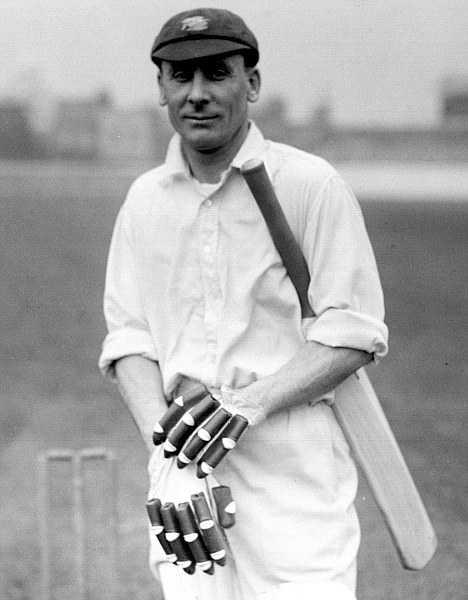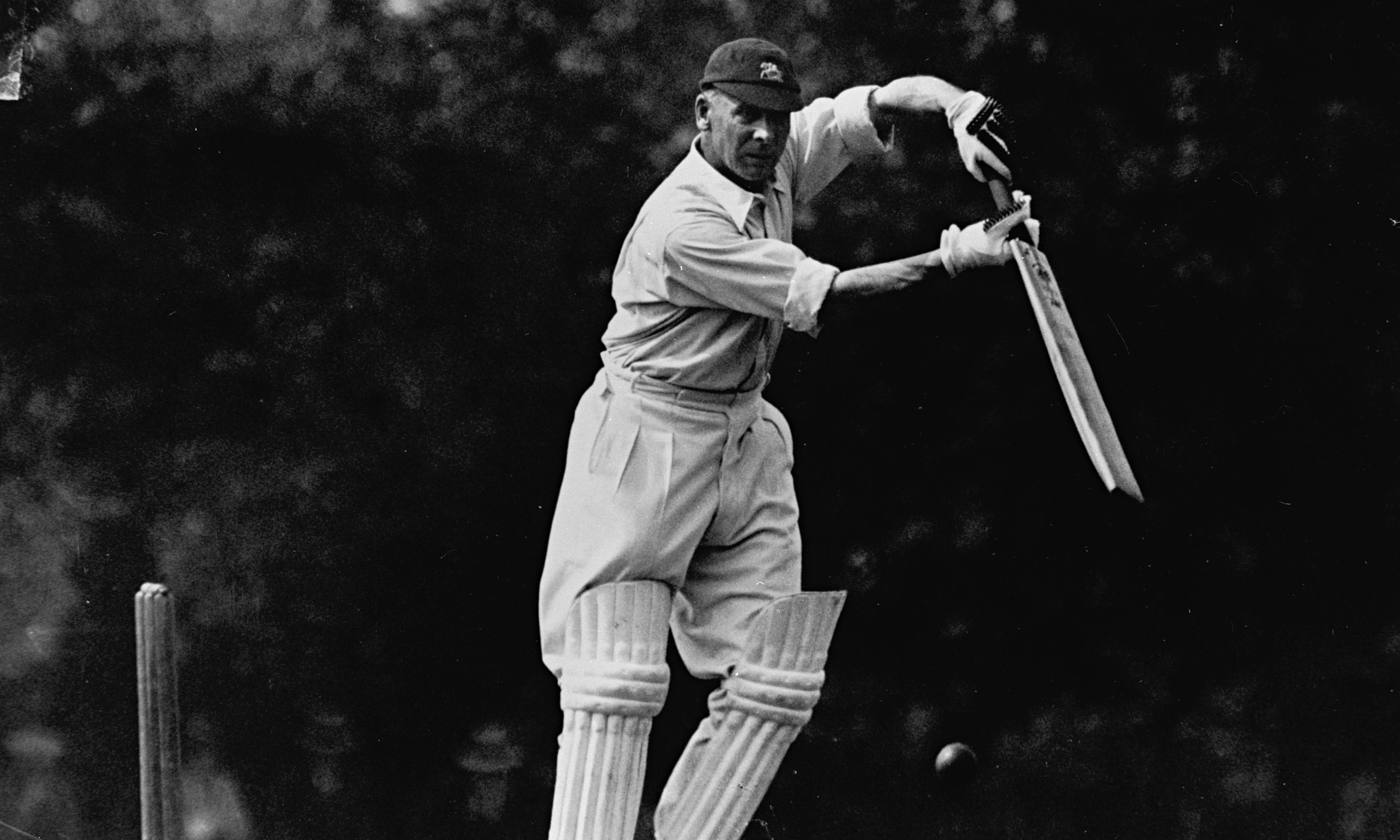Legendary England opener Jack Hobbs left an indelible impact on cricket that persists decades after his prolific career spanning from 1905 to 1934.
Born in 1882, Hobbs overcame his working-class beginnings to become one of cricket’s most prolific run scorers and enduring figures.
He made over 60,000 first-class runs, including a record 61 centuries for England, thanks to his flawless technique and unwavering concentration.
When Hobbs dominated bowling attacks featuring legends like George Hirst, Warwick Armstrong and Clarrie Grimmett, he earned admiration for his adaptability and resilience through periods of great change in cricket.
Article Highlights
Hide- Jack Hobbs, born in 1882, rose to fame in cricket through his resilience and tenacity, overcoming economic challenges and showcasing remarkable consistency at the crease.
- He holds numerous record-breaking achievements, including the most first-class runs, 199 first-class centuries, the highest partnership record, and becoming the oldest player to score a Test century.
- Hobbs played crucial roles in England's Ashes victories and cemented his reputation with his technical prowess and mental fortitude in various series.
- His legacy and influence are seen in the techniques and temperament of future batsmen, as he epitomized the quintessential opening batsman and set aspirational standards for aspiring cricketers.
Hobbs brought grace and style to the crease— attributes that influenced generations of technically sound batsmen after his retirement.
Though many of his staggering records have fallen, Jack Hobbs remains immortalized through cricket’s prestigious Hobbs Gates and the spiritual impact on English cricket’s ethos through his gentlemanly persona.
Early Life and Background
Jack Hobbs, born John Berry Hobbs on December 16, 1882, in Cambridge, England, emerged from modest beginnings to ascend the ranks of cricketing history.
His early life was marked by a blend of familial sporting influence and the socio-economic constraints of the late Victorian era. The son of a groundsman, Hobbs was steeped in the game from a young age, wielding the willow against a backdrop of economic austerity.
This period was characterized by the widespread stratification of class, a factor that no doubt shaped Hobbs’ tenacious spirit, which would later become a hallmark of his playing style.
AB De Villiers
AB de Villiers is considered one of cricket’s modern greats. Originally from Warmbad, South ... Read More
His formative years were spent in an environment that fostered his innate talent. Yet it was his own diligence and passion for the sport that propelled him forward.
The synthesis of his father’s tutelage and the prevailing hardships engendered a resilience that underpinned his subsequent endeavors.
Hobbs’ entry into professional cricket was thus not merely a progression but a testament to his perseverance amidst a rigid social structure.
His ascendance to cricket’s pantheon was a function of both his prodigious skill and the fortitude derived from his early experiences, embodying the meritocratic ideals that resonate with those who champion the notion of unfettered opportunity.
Rise to Cricketing Fame
As Hobbs transitioned into professional cricket, his exceptional talent and relentless work ethic quickly distinguished him as one of the sport’s most promising batsmen.
His ascent to cricketing prominence was not merely a function of natural aptitude, but rather the result of a synergistic confluence of intrinsic skill, an unyielding dedication to the craft, and a series of performances that not only captivated spectators but also reshaped the paradigm of batting during his era.
- Key Aspects of Hobbs’ Rise
- Consistency at the Crease: Hobbs demonstrated a remarkable consistency, amassing runs with a style that was both classical and effective. His technique was a paragon of orthodoxy, yet it possessed the versatility to adapt to various conditions and opponents.
- Influential Partnerships
Forming a formidable pairing with Herbert Sutcliffe, another colossus of cricket, Hobbs set numerous partnership records. Their synergy on the field exemplified cricketing excellence and elevated the standard for opening batsmen.
- Impactful Performances
Hobbs’ innings were often turning points in matches, showcasing his ability to alter the course of play. His dominance in The Ashes, particularly, cemented his reputation on an international stage, as he consistently thwarted Australia’s formidable bowling attacks.
In dissecting his trajectory to fame, one observes a cricketer who not only mastered the technicalities of batting but also understood the psychological warfare inherent in the sport, employing both to his advantage with unassailable acumen.
Record-Breaking Achievements
Building upon his ascent to cricketing stardom, Hobbs’ career was marked by a series of record-breaking achievements that further solidified his legendary status within the sport.
His accumulation of runs and centuries in First-class cricket established benchmarks that not only illustrated his personal prowess but also reflected the changing dynamics of the game during his era.
Hobbs’ records were not mere numerical milestones; they represented a relentless pursuit of excellence and a testament to his technical proficiency, adaptability, and longevity in cricket.
Hobbs’ penchant for record-setting was not limited to personal achievements; it also included partnerships that contributed significantly to team success.
His collaborations at the crease with fellow players often resulted in monumental stands that demoralized opposing bowlers and captivated spectators.
Analyzing Hobbs’ record-breaking feats offers a window into the evolution of batting strategies and the shifting paradigms of cricketing dominance in the first half of the 20th century.
| Record Title | Achievement | Significance |
|---|---|---|
| Most First-class Runs | 61,760 | Set a prolific standard for batsmen globally. |
| Most First-class Centuries | 199 | Epitomized batting mastery in a lengthy career. |
| Highest Partnership for any Wicket | 574 (with Sutcliffe) | Exemplified unparalleled synergy on the field. |
| Most Runs in a Single Season | 3,024 (in 1925) | Demonstrated exceptional consistency and endurance. |
| Oldest to Score a Test Century | 46 years and 82 days | Showcased remarkable longevity at the elite level. |
Hobbs’ achievements transcend mere statistics; they embody the spirit of cricketing freedom and the relentless pursuit of excellence.
Notable Innings and Matches
Delving into the most memorable chapters of Hobbs’ illustrious career, it becomes evident that certain innings and matches stand out not only for their statistical brilliance but also for their impact on the game’s history and the influence they had on future generations of cricketers.
- The Ashes
- 1911-12 series: Hobbs was a central figure in England’s triumph, with his opening partnership with Wilfred Rhodes being particularly dominant.
- 1924-25 series: A masterclass in batting on difficult pitches, Hobbs’ performance was a testament to his technical prowess and mental fortitude.
- 1928-29 series: His two centuries in the first two Tests cemented his reputation as a player of great calibre, especially against Australia’s formidable bowling attack.
- County Championship
- Surrey’s success: Hobbs’ contributions to Surrey’s dominance in the County Championship highlighted his consistency and ability to perform under pressure.
- Individual Milestones
- First professional to 100 centuries: The landmark century at the Oval against Somerset in 1925 was a monumental achievement in the annals of cricket.
Hobbs’ innings were marked by an analytical approach to the game’s challenges. His technique, characterized by a scholarly understanding of batting mechanics, was combined with a spirit of freedom, allowing him to adapt and thrive against varied bowling attacks.
Legacy and Influence
Jack Hobbs’ enduring legacy in the realm of cricket is evidenced by his profound influence on the technique and temperament of batsmen who followed in his footsteps.
He epitomized the quintessential opening batsman, combining technical proficiency with an unflappable disposition, characteristics that have become aspirational benchmarks for subsequent generations.
Hobbs’ approach to batting was grounded in an unwavering commitment to the fundamentals of the game, fostering an ethos of batting purity that emphasized grace, balance, and judicious shot selection.
His record-setting achievements have not only established a high-water mark for individual excellence but have also served to inspire a culture of relentless pursuit of excellence amongst cricketers.
Hobbs’ career spanned across multiple eras of cricket, navigating the evolution of the sport with aplomb, and setting a template for adaptability and longevity in the game.
Moreover, his contributions are not confined to mere numbers; Hobbs’ sportsmanship and dedication to the spirit of cricket have promulgated a legacy of integrity and respect for the game that resonates to this day.
His impact transcends statistical accomplishments, as he is remembered as much for the way he played the game as for the records he set—a true embodiment of cricketing nobility.
Summary
Jack Hobbs emerged as a quintessential figure in cricket history, renowned for his prolific run-scoring and exemplary technique. His record-breaking career, characterized by remarkable innings and influential performances, cemented his legacy as one of the game’s greatest batsmen.
Hobbs’s influence transcends eras, setting standards for future generations and contributing significantly to the evolution of cricket. His enduring legacy continues to inspire cricketers, underscoring the timeless nature of his contributions to the sport.

















